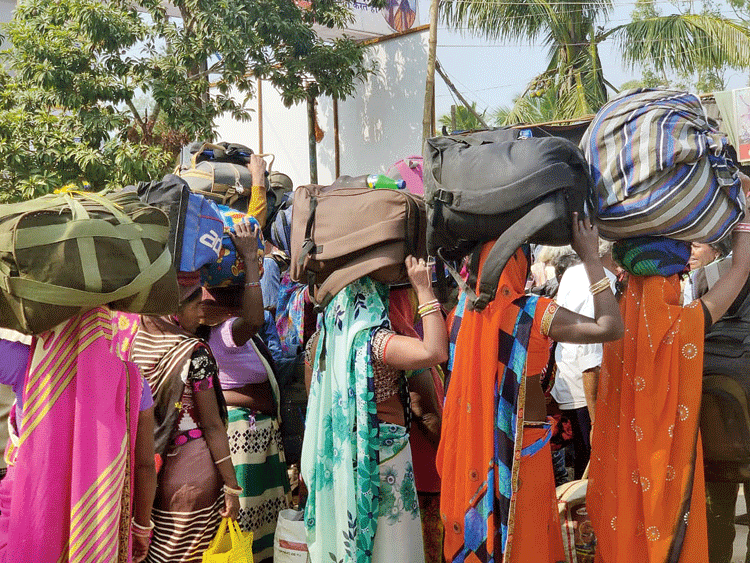It is dusk. A bus trudges its way through the dusty road to stop at the path leading to my ancestral village. There was a certain quiet as the family stood there eagerly and silently praying and waiting for it to stop.
It’s the bus bringing back the pilgrims from Gangasagar.
It stopped and the conductor helped some to disembark. Among those few returning was my grandma with tonsured head wearing a white borderless dhoti with her hands and body gone frail and tanned. The conductor handed over the brown cotton “pootli”, in which she had brought some stoneware bowls and prasad for her kin from her maiden tirtha yatra.
Family has a sigh of relief and they welcome this blessed soul by washing her feet as was the custom those days. She had lost some of her aged co-travellers from nearby hamlets. Who knows, they may have been lost forever in the divine waters of the Muri Ganga. The mystery remains unsolved till today.
Much has changed since then. But still the journey remains arduous though less arduous than before.
Destiny probably brought me here as a witness to this unique annual event on Makar Sankranti. I stood stunned and silent on the banks of the Muri Ganga seeing every pilgrim pass by. They risked old age, defied life’s predicaments, eyes beaming with a sense of eternal redemption. They had set out on a journey with no definite hope of shelter, food and rest in that cold winter. Men, women with grandchildren and old grandparents clad in simple warm clothing, many without a footwear walked along the blurred and stony path in the winter fog to board the ferry which would take them to the other side of the river to seek peace and salvation. These were men and women from all over my country.
To a modern mind the journey may have a different meaning and interpretation — it’s a pilgrimage for the poor and less fortunate who cannot afford something more. But I realised what my country is — diverse democracy with a deep faith and spirituality, unique in its own way.
The state government made relentless effort to make the event as best as they could with all available own resources mitigating all risk factors. Men and women deployed worked dawn to dusk without a complaint, sans food sans rest. Those in uniform stood with a belief and an attitude that “helping a pilgrim is equal to many pilgrimages”.
And many elders showered their blessings on these dedicated people as they left on their return journey to their home.
Now I have tales to tell my grandchildren. To our young generation I have much to narrate for they have the spirit of adventure, quest for the new and something that is different. They too need a break from their modern life. They may find an answer here. We all have much to learn from here than the Tales of medieval pilgrims in Chaucer’s Canterbury Tales.
I have travelled much and taken many lessons from many countries but the final lesson of life I got here. I went there as an observer on duty but returned an enchanted pilgrim. The Holy dip strengthened my mind, love for the elemental; and deeper wounds healed forever. The river spoke of the ebb and flow of life and every wave whispered something about life, death and eternity.
Like the Ancient Mariner, “A saner and a wiser man I rose the morrow morn”.
The writer is a retired IPS officer now working with the Bengal government










